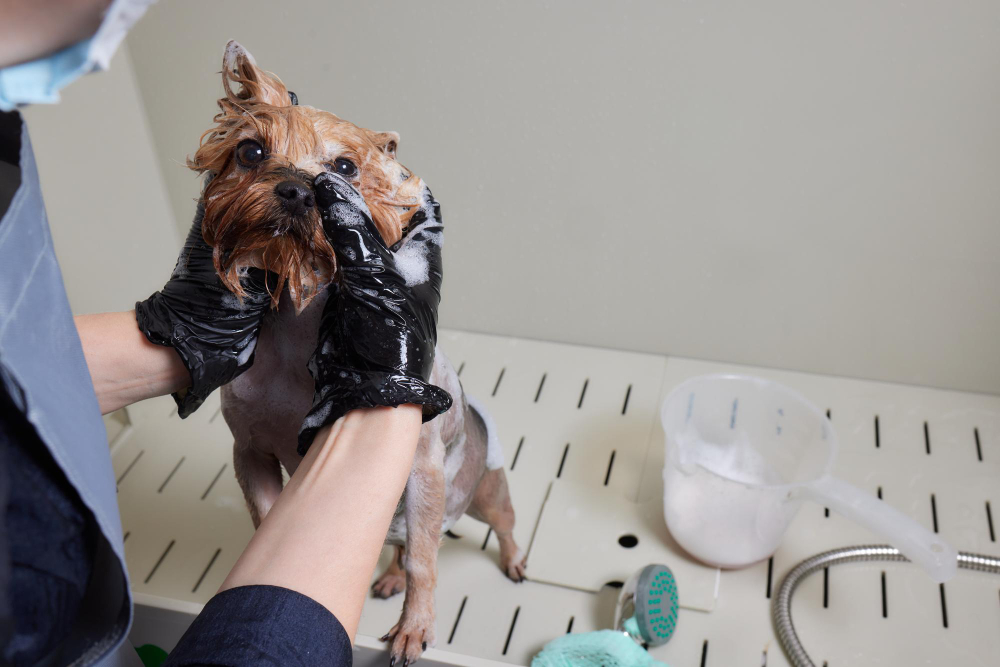Grooming your dog is essential for their health and well-being, but it can sometimes be a stressful experience for both you and your furry friend. If your dog becomes anxious or agitated during grooming sessions, you may be considering sedation as a way to make the process more manageable. However, sedating your dog for grooming requires careful consideration and should only be done under the guidance of a veterinarian. In this article, we’ll explore safe and effective methods for sedating your dog to ensure a stress-free grooming experience.
Prioritize Safety and Well-Being
Before attempting to sedate your dog for grooming, it’s crucial to consult with your veterinarian. They can assess your dog’s health status, behavior, and individual needs to determine the most appropriate sedation options. Your veterinarian may recommend prescription medications or alternative methods based on your dog’s specific circumstances, ensuring their safety and well-being throughout the grooming process.
Administering Sedatives Under Veterinary Supervision
Prescription sedatives are one option for calming your dog during grooming sessions. These medications are typically administered orally and can help alleviate anxiety, fear, and stress. Common sedatives used for dogs include benzodiazepines, such as diazepam or alprazolam, and alpha-2 agonists, such as dexmedetomidine. It’s essential to follow your veterinarian’s instructions carefully when administering sedatives, as improper dosage or misuse can lead to adverse effects.
Exploring Calming Supplements and Treats
In addition to prescription medications, there are several natural remedies and supplements that may help calm your dog during grooming. Options such as CBD oil, chamomile, and lavender have been shown to have calming effects on dogs and may help reduce anxiety and stress. Additionally, there are calming treats and supplements specifically formulated to promote relaxation and ease nervousness in dogs. While natural remedies can be effective for some dogs, it’s essential to consult with your veterinarian before using them to ensure they are safe and appropriate for your pet.
Building Positive Associations
Counterconditioning and desensitization techniques can help reduce your dog’s anxiety and fear associated with grooming. By gradually introducing grooming tools and procedures in a positive and non-threatening manner, you can help your dog build confidence and trust over time. Start by offering treats and praise while gradually exposing your dog to grooming tools, such as brushes and clippers, in short, gentle sessions. With patience and consistency, you can help your dog learn to associate grooming with positive experiences.
Creating a Calm and Comfortable Setting
Creating a calm and comfortable grooming environment is essential for reducing your dog’s stress and anxiety. Choose a quiet, well-lit area free from distractions where your dog feels safe and secure. Use non-slip mats or towels on grooming surfaces to prevent slipping and provide stability. Play calming music or use aromatherapy diffusers with soothing scents to help relax your dog during grooming sessions. Minimizing loud noises and distractions can help create a more peaceful atmosphere for both you and your pet.
Seeking Expert Assistance
If grooming your dog at home proves to be too challenging or stressful, consider seeking professional grooming services. Professional groomers are trained to handle dogs of all sizes, breeds, and temperaments and can provide expert care in a safe and controlled environment. They may also have access to specialized grooming techniques and equipment to ensure a thorough and comfortable grooming experience for your dog. Working with a professional groomer can alleviate the need for sedation and provide peace of mind knowing that your dog is in capable hands.
Prioritizing Comfort and Care
In conclusion, sedating your dog for grooming should be approached with caution and under the guidance of a veterinarian. While prescription medications and natural remedies can help calm anxious dogs, it’s essential to prioritize safety and well-being throughout the process. Incorporating counterconditioning and desensitization techniques, creating a calm grooming environment, and seeking professional grooming services when needed can all contribute to a stress-free grooming experience for you and your furry companion. By prioritizing comfort and care, you can ensure that grooming remains a positive and enjoyable activity for your dog.






